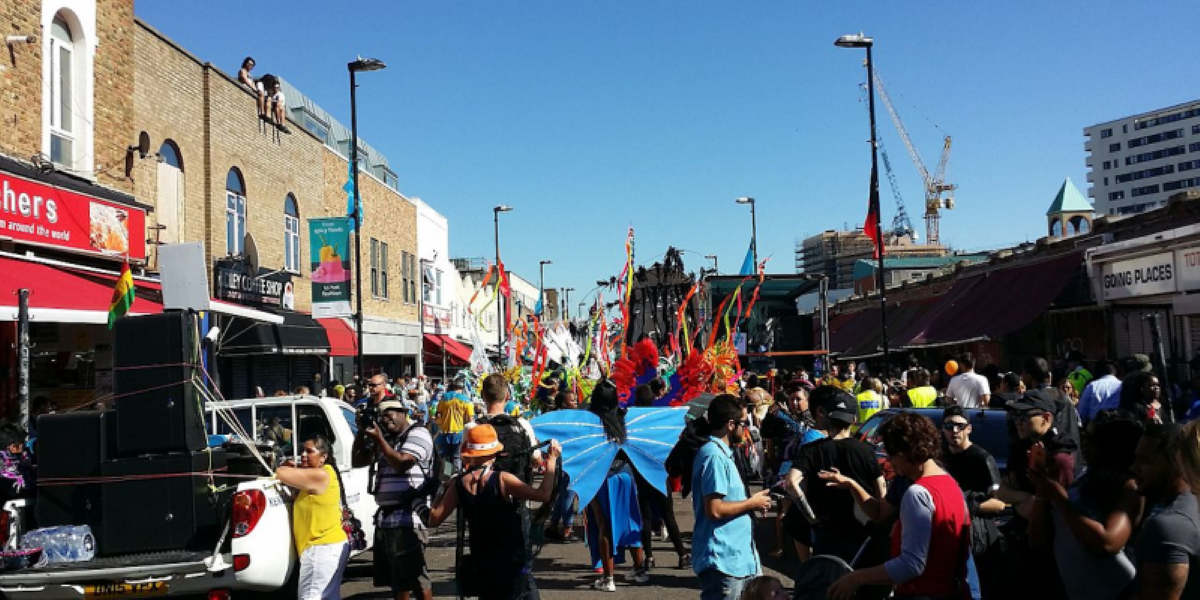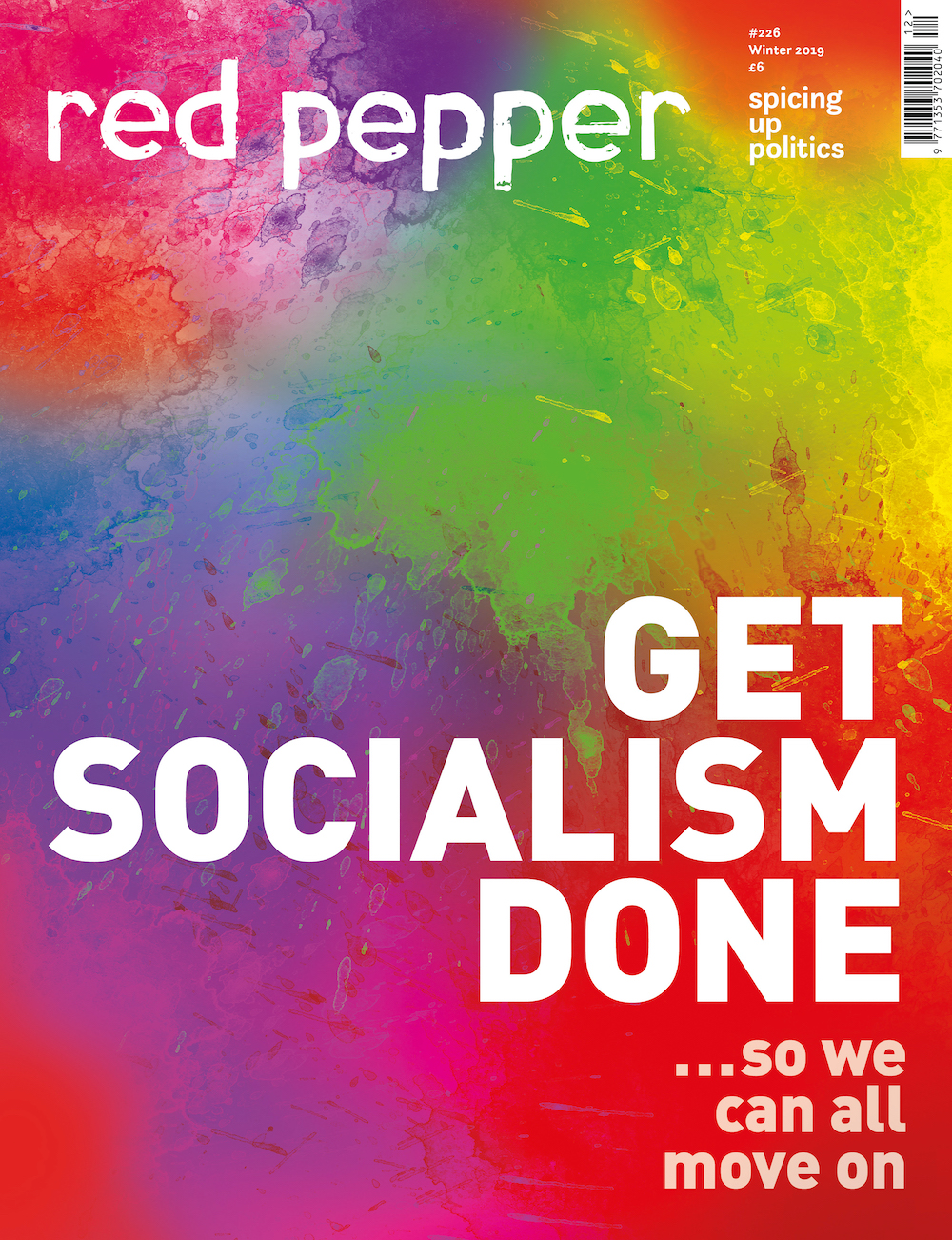Title: I Could Be So Good for You: A Portrait of the North London Working Class
Author: John Medhurst
Publisher: Repeater
Year: 2023
In recent years, the language used by estate agents to describe various London neighbourhoods has become increasingly meaningless and, in some cases, absurd. Here, I’m thinking partly of my mum, who grew up in east London’s Leyton, and her incredulous response to the property pages labelling a section of her old, unglamorous stomping ground ‘Leyton Village’ – and ‘villages’ and ‘quarters’ do indeed abound in this new Manhattanised terminology.
But there are more subtle examples of this blurry and imprecise language. Hackney becomes ‘the east end’, Stoke Newington becomes Dalston (or vice versa), Walthamstow is ‘Hackney borders’, and so on. One effect of this vacuous marketing schtick, beyond its relationship to rising rents and house prices, is that it flattens out the geographical, historical and cultural specificity of these areas.
John Medhurst is at pains to set this right in his rich and detailed account of the north London working class from the 1950s up to the present day. He begins by defining his terms. The geographical boundaries he sets for the study are by his own admission contestable. North London for him is:
‘a large semi-circle of territory with the River Thames as its undulating base, the approximate border of which flows north-west-south from Shoreditch through Tottenham, Golders Green, Willesden and Hammersmith, i.e., the entire London Boroughs of Islington, Camden, Kensington & Chelsea, Hammersmith & Fulham, and the City of Westminster; most of Hackney and Haringey; enclaves of the City and a few western slivers of Tower Hamlets; and those parts of Enfield, Ealing, Barnet and Brent that closely attach to this inner core.’
Some might quibble with this, especially when he claims – perhaps slightly mischievously – that ‘some areas south of the river, such as Borough, Vauxhall and Battersea, have by proximity and better transport links always had a north London air about them’. But there will always be an element of subjectivity in such an account of a place and Medhurst owns up to its idiosyncrasy from the beginning.
There is much here to back him up. He has a pleasing granular exactness when justifying why certain areas are, for him, geographically and spiritually ‘north London’. For those who might label Hackney as east London, for example, he tells us that it has always been more accessible to north London than to places in the East End. This is partly geography but also thanks to the Stratford-Willesden Junction North London line (now incorporated into the London Overground).
Myths and mobilisation
‘North London’ has long been lazily and ignorantly thrown about as a signifier of privilege, usually to discredit left-wing arguments. This tendency attained absurd levels during Islington North MP Jeremy Corbyn’s leadership of the Labour Party, and reached a horrid apotheosis in 2019 when Priti Patel, justifying the ending of ‘free movement of people once and for all’, said she would take no lectures from ‘the north London metropolitan elite’. The slur has anti-semitic connotations, a fact which has now become more widely acknowledged, and this idea of out-of-touch privilege can also be countered with economic reality – about the high rate of child poverty in various north London boroughs, for example. As Medhurst puts it, his desire to tell the story comes from the ‘absurd yet widespread assumption that North London has no working class.’
He does an excellent job of conveying the very particular quality of these communities. He points out that, in the period he is writing about, working-class Londoners have not, largely, worked in manufacturing from scratch, and instead have mainly found employment in sectors such as repair work, textiles, market trading, the service industry, transport and a variety of skilled crafts. (There are exceptions to this, which he acknowledges, such as the manufacturing centres of Park Royal and Tottenham Hale).
Medhurst uses a huge range of sources, including academic studies, social histories, memoir, novels, film, TV shows and pop music, as well as his own extensive interviews with people from the area, which make up large sections of the book.
Medhurst’s desire to tell this story comes from the ‘absurd yet widespread assumption that north London has no working class’
The book shows the material struggles of this life – poor housing conditions, racism, insecure and badly paid work, discrimination, violence – through the rich individual perspectives of Medhurst’s interviewees. But we also hear about working-class mobilisation in the face of these challenges: rent strikes, direct action, anti-fascist demonstrations, squatting, sex worker strikes. Social housing is key to all these stories, of course, and he tells us the stories, fates and fortunes of many key estates.
We learn that the Golden Lane estate next to the Barbican was originally built for single people and couples, rather than families with children. Medhurst describes the low-rise and spacious design of the 1960s Maiden Lane estate in Camden, its struggles in the 1970s, and its turnaround in the 1980s and 90s. He also rails against ‘the PFI con’ that Islington Council fell for with its social housing in the early 2000s, which resulted in mismanagement, poor quality control and misspending.
Medhurst gives accounts of many working-class council tenants – including his dad – who bought their flats under the Thatcher government’s right-to-buy scheme. While alive to the attractiveness of the scheme, he does not shy away from the devastating impact it had on north London’s council stock, with a huge proportion of it now for private rent or selling at open market prices, and many of these estates hugely attractive to wealthy middle-class professionals.
Cultural capital
Medhurst is particularly alive to the myriad social and cultural riches present in a childhood lived in the central parts of north London. There are fascinating accounts from people who grew up in Soho, Bloomsbury and Covent Garden, who were able to pop into the British Museum with their friends as kids or run around in Covent Garden market. He describes the ‘less regularised and predictable’ rhythms of a life lived so close to the centre: ‘If only by virtue of proximity, aspiration, imitation and lucky happenstance, they possessed or acquired more innate cultural capital than others not so fortunately situated.’
Medhurst’s interviewees include market traders, jewellers, those who worked in clubs and bars, or whose family owned pubs. This could sometimes result in a kind of ‘wheeler dealer’ mentality, which Medhurst gives us in the picture he draws of his father, Ted, who trod ‘the fine line between legality and illegality’ with his various entrepreneurial schemes in the 1980s.
Medhurst’s emphasis on the cultural life of north London is also key here. I particularly enjoyed the sections on pop music. There are stories of acts already reasonably well known for their north London connections such as Rod Stewart, Madness and The Clash, but I was thrilled to see Wham! folded into a history of the metropolis as well.
So much fascinating material has been gathered together for this book and the chronological chapters, without themed sections or headings, can have the slightly dizzying effect of piling detail upon detail before you’ve had the chance to take it all in. I was interested in Medhurst’s personal experiences growing up in north London and his own working life in the area – for example, selling books in Villiers Street market and his stint of employment in the Hackney unemployment benefit office – and I would have liked him to expand on this in more detail. A brief account of his family background, including his father Ted, is given in the endnotes, but a more thorough engagement with his own personal story could perhaps have been used as a thread throughout the book and would have been one way to give it a tighter structure.
So much fascinating material has been gathered together that it has the slightly dizzying effect of piling detail upon detail
I also wanted to know more about the huge quantity of interviews he undertook. How did he know these people? Where did the interviews take place? I suppose in academic terms you might call this ‘positionality’, but it needn’t be done in the fashion of a dry methodological account, and some descriptive framing would certainly have helped orientate the reader in this occasionally overwhelming sea of information.
That said, the book was often a real pleasure to read, with the depth and detail of Medhurst’s knowledge and the originality of his perspective. Though the narrative does not shy away from the extreme injustices and cruelty visited upon north London working-class communities – including the gentrification, racism and violence of the present day – he seems determined not to succumb to pessimism.
Perhaps the most valuable aspect of the book is its effortlessly inclusive approach, especially the anti-racism running throughout. He rejects any idea that migrants are not part of the working class and repeatedly draws attention to the times where people from all sections of the community have mobilised together to fight injustice. From this, many people, including on the left, could learn a lot.










